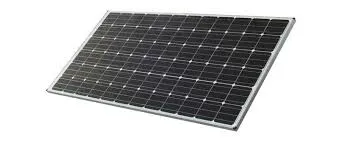solar panel how its made
How Solar Panels Are Made
Solar panels, a remarkable innovation harnessing the power of the sun, are essential in the modern pursuit of renewable energy. As demand for clean energy sources increases, understanding how solar panels are made provides insights into their effectiveness, efficiency, and the technology behind them.
The production of solar panels begins with the primary raw material silicon. Silicon, a widely abundant element found in sand, is purified to obtain high-purity silicon necessary for solar cells. This purification process involves converting silicon dioxide into metallurgical-grade silicon, which is then further refined through a process called the Siemens process. This method produces silicon with a purity of over 99.9999%, essential for optimizing the energy conversion efficiency of the resulting solar cells.
How Solar Panels Are Made
After slicing, the wafers undergo a series of treatment processes. First, they are cleaned to remove any contaminants that could hinder their performance. Then, they are subjected to a doping process, where impurities are added to create a p-n junction. This junction is critical for creating an electric field within the solar cell that facilitates the flow of generated electricity. The most common dopants used are phosphorus and boron, which help in creating the necessary electronic properties in the silicon.
solar panel how its made

Next, the solar cells are coated with an anti-reflective layer, usually made of silicon nitride, to minimize the loss of sunlight due to reflection. This coating enhances the absorption of photons, increasing the overall efficiency of the solar cells. The cells are then treated to enhance their conductivity and further protect them against environmental effects.
Once the solar cells are prepared, they are interconnected to form a solar panel. This involves soldering metal connectors onto the cells, linking them in series or parallel depending on the desired voltage and current output. The interconnected cells are then laminated between protective layers of glass and a backing material, typically made of durable polymers. This lamination ensures that the cells are weatherproof and can withstand various environmental conditions.
The final step in the production process is quality testing. Each solar panel is rigorously tested for efficiency, durability, and performance under different conditions. Testing involves subjecting the panels to extreme temperatures, humidity, and exposure to sunlight to ensure that they meet industry standards.
Once the panels pass inspection, they are packaged and shipped to various locations for installation. Solar panels can be deployed in residential, commercial, and utility-scale projects, contributing to the growing movement towards sustainable energy sources.
In conclusion, the making of solar panels involves a meticulous process, from the purification of silicon to the assembly and testing of the final product. As technological advancements continue to improve the efficiency and reduce the costs of solar panels, they occupy a pivotal role in the global transition towards clean, renewable energy, encouraging a more sustainable future. Through understanding the manufacturing process, consumers and stakeholders can appreciate the value and potential of solar energy in combating climate change.
-
Navigating Off Grid Solar Inverter: From Use Cases to Trusted PartnersNewsAug.05,2025
-
Solar Edge String Inverter: A Wholesaler’s Guide to Inverter Technology SelectionNewsAug.05,2025
-
Microinverters: Revolutionizing Solar Energy UseNewsAug.05,2025
-
Future of Monocrystalline Solar Panel Efficiency: Latest Technological AdvancesNewsAug.05,2025
-
Solar Panels for House: A Complete Guide to Residential Solar EnergyNewsAug.05,2025
-
Panel Bifacial Performance in Snow and Low-Light ConditionsNewsAug.05,2025







